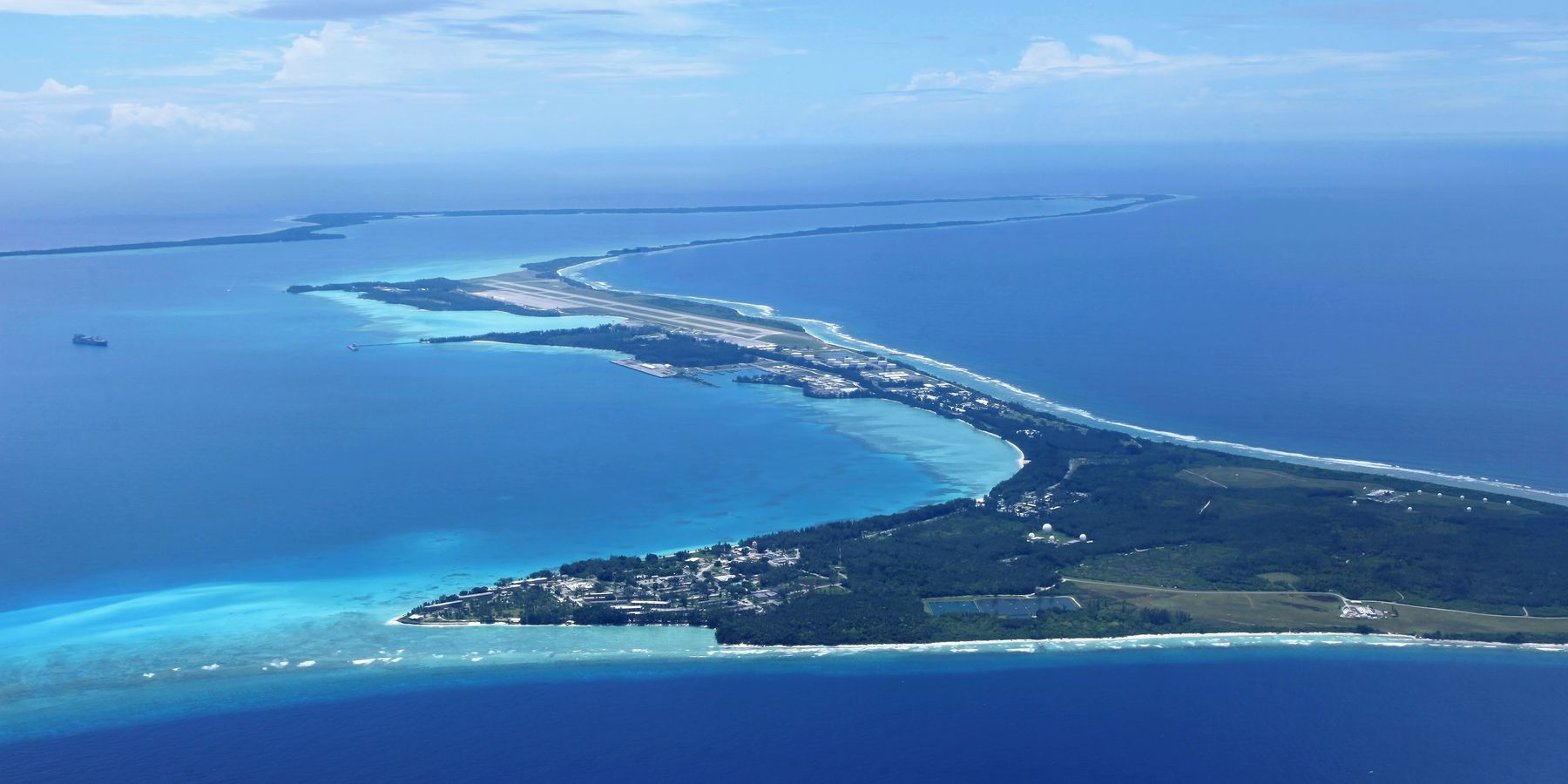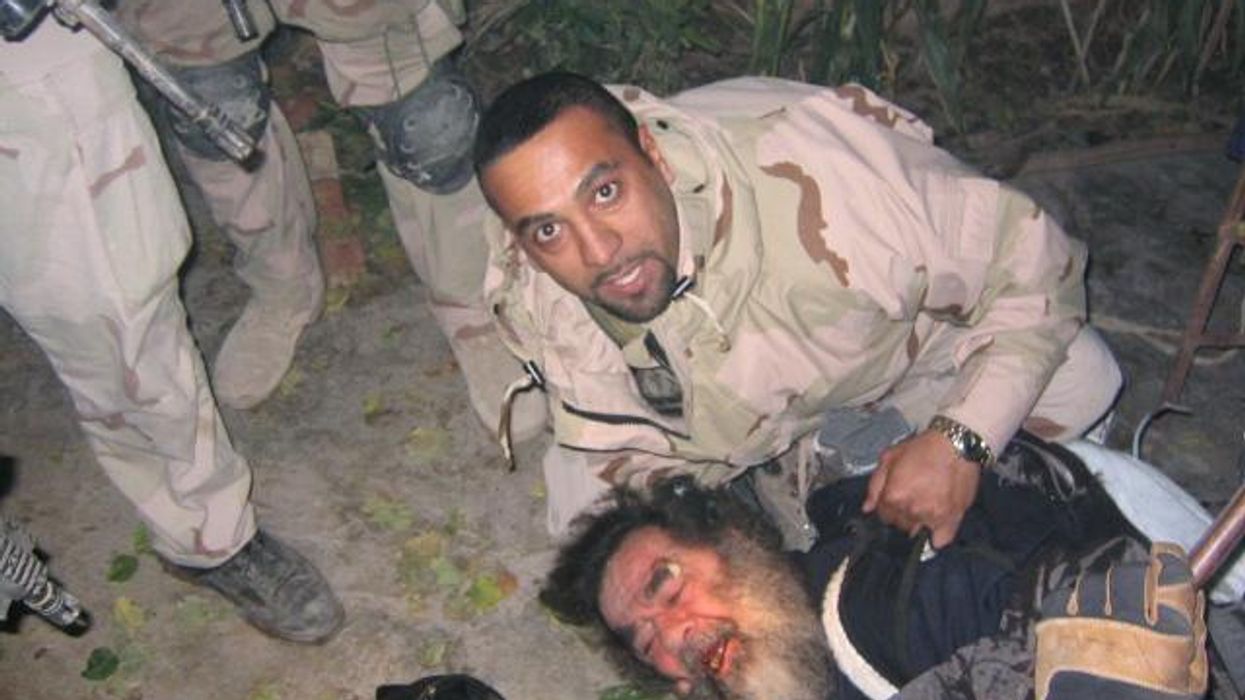The United Kingdom agreed last week to return the Chagos Islands, a remote archipelago in the Indian Ocean, to the African nation of Mauritius after buying the islands and forcibly removing its native inhabitants in the late 1960s to make way for a U.S. military base.
This agreement will not spell the end of American military presence on the islands, however. In fact, the only condition of the UK’s deal with Mauritius is that the U.S. must be allowed to continue its base’s operation on the Chagossian island of Diego Garcia for the next 99 years.
The White House released a statement on Oct. 3 lauding the renewed lease, writing that the outpost on Diego Garcia, one of the Americans’ estimated 750 bases across the world, “enables the United States to support operations that demonstrate our shared commitment to regional stability, provide rapid response to crises, and counter some of the most challenging security threats we face.”
These vague, well-rehearsed statements on foreign policy priorities, however, fail to explain the supposed threats, material or otherwise, that justify the American military’s permanent operations in at least 80 countries across the globe.
“These bases are not vital to protect the homeland, they are vital to protect primacy,” charged Sarang Shidore, director of the Global South Program at the Quincy Institute. “There isn’t a logical argument for protecting vital national interests through domination of every corner of the world.”
This global network of military bases has too often damaged both U.S. interests in themselves and the rights and interests of those living in the places where our military machine has sought permanent operation. The history and intentions behind the base at Diego Garcia, ironically nicknamed the “Footprint of Freedom,” proves no different.
The British bought the Chagos archipelago from Mauritius in 1965, forming the British Indian Ocean Territory. The following year, the U.S. struck a secret deal with the UK for a 50-year lease of Diego Garcia and the removal of its people, offering a $14 million discount on its sale of Polaris missiles to the UK military in return.
At America’s request, the UK promptly began expelling the more than 1,500 Chagossians on Diego Garcia and its surrounding islands — violating a slew of international laws in the process. Chagossians who had not been deported by the beginning of the base’s construction in 1971 were loaded onto overcrowded cargo ships and left on the docks of Mauritius and the Seychelles with no compensation, resettlement or employment plans provided for them.
In the years following their expulsion, many Chagossians in these two countries experienced discrimination and extreme poverty. While the UK doled out small reparative sums on two occasions, the U.S. has neither admitted to any wrongdoing for its actions nor contributed to compensation for the expelled Chagossians.
David Vine, author of the book “Island of Shame: The Secret History of the U.S. Military Base on Diego Garcia,” says that the U.S. has always had the final word on what happens on the Chagos Islands.
“The U.S. government has been intimately involved in every detail and has always been the power behind the scenes from the initial idea to today,” he said.
With all the Chagossians gone by 1973, the U.S. completed its project and launched the base’s operation. Originally stationed for communications purposes, it expanded through the decades to become a major naval and air center used by the U.S. military for long-range bombing missions in its wars in Kuwait, Afghanistan, and Iraq. The base was also used for rendition flights in 2002, a claim denied by the U.S. but confirmed by the UK in 2008.
Further speculation surrounding U.S. activities on Diego Garcia has ranged from the storage of nuclear weapons to torturing captured suspected terrorists. Still, Vine said it’s impossible to know for sure the full extent of the military’s operations on the island.
“The military loves [Diego Garcia] because there’s no civilian population and they’ve been able to bar access to everyone — from journalists to rights organizations to academics,” Vine said, also citing his own unsuccessful attempts to visit.
Diego Garcia certainly stands out for its controversial origins and operative uses, but it is, again, a small node in the U.S. global military machine. In 2021, Vine and colleagues put together a dataset outlining every known U.S. military base, its financial and environmental costs, and the type of political regimes hosting such bases.
Of the 80 countries and territories known to house U.S. military bases, 38 are non-democratic (authoritarian, semi-authoritarian, or colonial). The authors also found that U.S. bases contributed to both civilian protests and “significant environmental damage” in about half of these countries and territories.
Given the bleak history of peoples subject to permanent U.S. military presence, both Vine and Shidore said the terms of the UK’s decision to hand back the islands leaves some room for positivity — especially in the context of the global decolonization movement. The UK has at least formally acknowledged its wrongdoing and the Chagossians now have a potential path to return to the islands.
“It’s better than the old era where people could just be kicked out without anyone doing anything about it. Now it’s being acknowledged that that was wrong,” Shidore said.
Still, mixed feelings prevailed among the Chagossi people themselves — today numbering about 10,000 across Mauritius, the Seychelles and the UK — with excitement about the prospect of returning dampened by their complete lack of inclusion in the negotiations.
“We feel sorry, upset, and angry,” said Jean-François Nellan, a member of the UK-based advocacy group Chagossian Voices. “They’ve made a deal on the back of the Chagossians, just as they did in the past.”
While the agreement allowed the Mauritian government to begin plans for resettlement of the Chagos Islands, Diego Garcia, where most Chagossians lived prior to the expulsion, is to remain restricted. Nellan, whose grandmother visited Mauritius during the expulsion period and was not allowed to return to her home on Diego Garcia, expressed his frustrations about this condition.
“People who were born on Diego Garcia — does that mean that they will never go back? They will need to wait another 99 years for the lease to end?,” he said. “My grandmother is in her eighties now; she was born on Diego Garcia. Does that mean she will never go back now?”
Nellan described how Chagossians feel let down by the U.K., Mauritius and the U.S. alike, and that their strife was “initiated” by the U.S., “executed” by the UK, and “helped” by Mauritius. He said they do not trust the Mauritian government to handle their resettlement plans and that they do not support Mauritius’ new sovereignty over the islands.
Shidore posits that the U.S. approved the UK’s recent decision as a small allowance in the face of growing international pressure, but that it would never go as far as jeopardizing the base’s existence and full operation.
“You have to make some concessions,” he continued. “But you don’t make the big concession and don’t let anything touch the question of primacy, which is the heart of this project.”
- Is that US drone base in Niger really necessary? ›
- 750 US military bases remain around the planet ›
- No, Mauritius isn't planning to 'give' US base at Diego Garcia to China | Responsible Statecraft ›
















